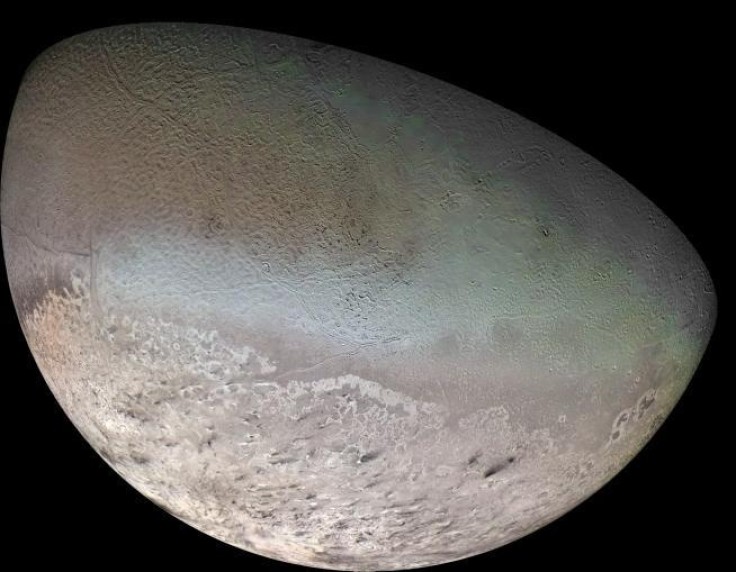Neptune is one of the largest planets in terms of diameter. It is considered the fourth largest planet in the solar system. The planet is also known for its moons. It has a total of 13 moons, according to NASA. And one of its moons is Triton.
In October 10, 1846, Triton was discovered by British astronomer William Lassel. The discovery was made just 17 days after the planet Neptune was discovered.
The name Triton was obtained from a Greek God, who was a son of Poseidon (Neptune.)

Triton and its Backwards Orbit
Triton is unique because it orbits Neptune in what is known as a retrograde orbit. This means that it orbits Neptune in a direction opposite the planet's rotation.
Triton is the only large moon in the Solar System to have a retrograde orbit. Until now, it is still unknown why Triton rotates in this manner.
Triton is locked in synchronous rotation with Neptune like the Earth's moon. But both polar regions take turns facing the sun due to its unusual orbital inclination.
Triton's size, as well as surface features, are quite similar to Pluto. There are even those who are questioning the connection between Triton's features and the fact that Pluto actually crosses Neptune's orbit from time to time.
Triton's diameter is 1,680 miles (2,700 kilometers). The said moon has a sparsely cratered surface with smooth volcanic plains and mounds. Round pits formed by icy lava flows can also be found on the moon's surface.
The crust of Triton is frozen nitrogen. It is believed to have an icy mantle covering a core of rock and metal.
Its density is about twice that of water, implying that more rock can be found in its interior.
Read Also: Neptune, Uranus Could Experience Diamond Rains More Often Than Expected
The Theory About Triton's Formation
According to Forbes, there are two theories on how planets got their moons. One is the moons probably arose as a result of a giant impact. The other theory is the moons are probably left over from the formation of the Solar System that was eventually created from a circumplanetary disk.
While Earth and Mars obtained their moons from giant impacts, it is quite different for Neptune. It seems to have "obliterated almost the entire Neptunian system in the process."
Neptune's moon system is unique. It is dominated by Triton, the seventh-largest moon in the Solar System. The rest of its satellites look normal, but Triton is different because of composition.
Triton's unique orbit tells us that it possibly did not form from the same circumplanetary disk that the interior moons formed from during the early stages of the Solar System.
It looks like Triton was originally a Kuiper belt object, and some time ago, Neptune's gravitational force captured it. Thus, it continued to orbit the planet until today. If this speculation is true, it is highly likely that Neptune has a lunar system of its own.
Related Article: James Webb Space Telescope Snaps Stunning Photo of Neptune's Rings, Moons









